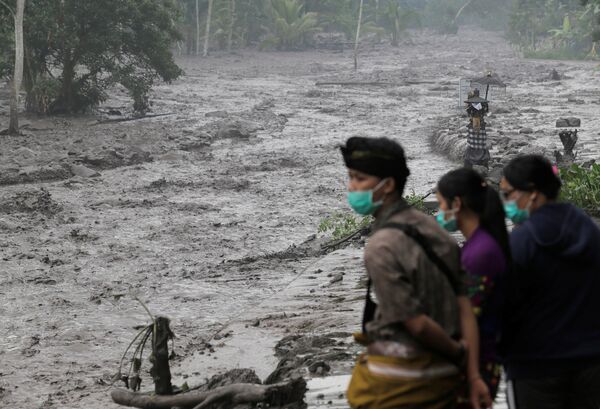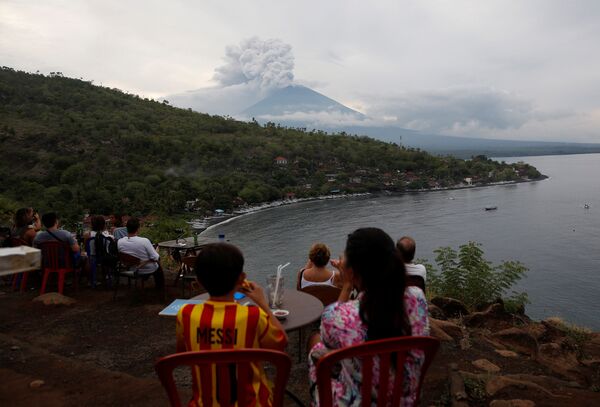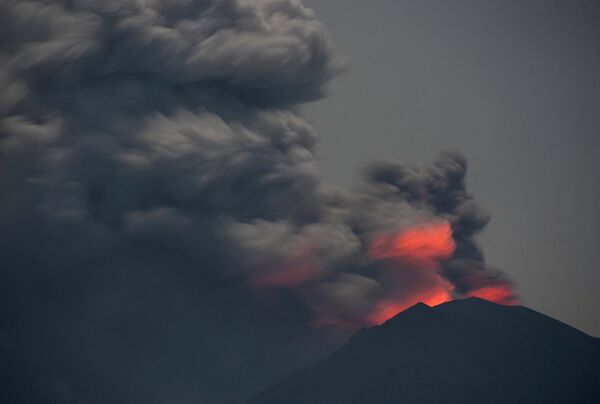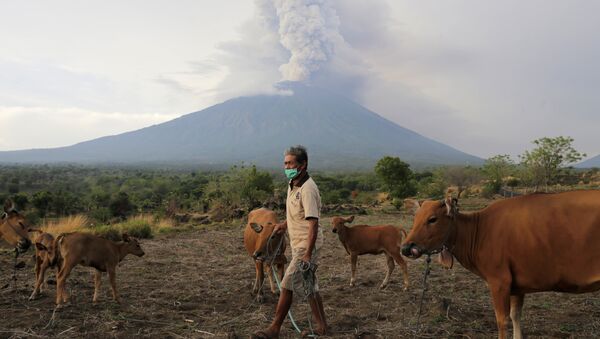Mount Agung has spewed ash 7,600 meters (4.7 miles) into the sky, prompting the closure of Bali island's international airport for a third day.
About 60,000 passengers remain stranded; over 440 flights have been canceled, The Telegraph cited airport spokesman Ari Ahsanurrohim as saying on Wednesday.
The newspaper also referred to Indonesian volcanologist Gede Swantika, who has warned of a thermal anomaly in the volcano's crater which was detected by a NASA satellite.

According to him, it means that it will be easier for magma to foray to the surface in the immediate future.
Indonesia's Mount #Agung continues its #eruption phase. Let’s see the video and what’s going on with #aviation and #airport #DPS in #Bali pic.twitter.com/iRZokHfy0x
— Benoit Macris (@betahiti) 26 ноября 2017 г.
Earlier this week, the alert status of Mount Agung was upgraded from level three to level four (the highest possible level) as local authorities ordered the evacuation of almost 100,000 people within the 10 kilometer area around the volcano.

Volcanologists, however, warned of an imminent larger eruption.
Beautiful nature of Mount Agung with its eruption. There is a harmony between nature and its people. Mount Agung must erupt sometime. Let nature work. That's when humans step aside to make room for the mountain to erupt in order for humans to survive. Volcano gives blessings. pic.twitter.com/nJ8asvIIt4
— Alam Banten (@alambanten) 28 ноября 2017 г.
Mount Agung last erupted in 1963, killing around 1,600 people.

It has been rumbling for weeks, and in the last few days has begun shooting ash columns and clouds into the sky.
Mount Agung is waking for the first time since 1963 #bali #volcano #eruption pic.twitter.com/AaTF9LZEbP
— jimmy rougerie (@JimmyRougerie) 27 ноября 2017 г.
About 40,000 people have already been evacuated from the eruption area but others haven't left "because they feel safe or don't want to abandon their livestock." The island is approximately half the size of Los Angeles County and home to 4.225 million people.


